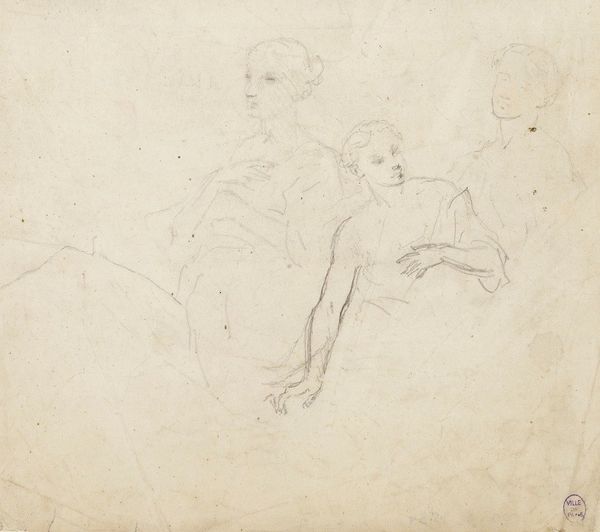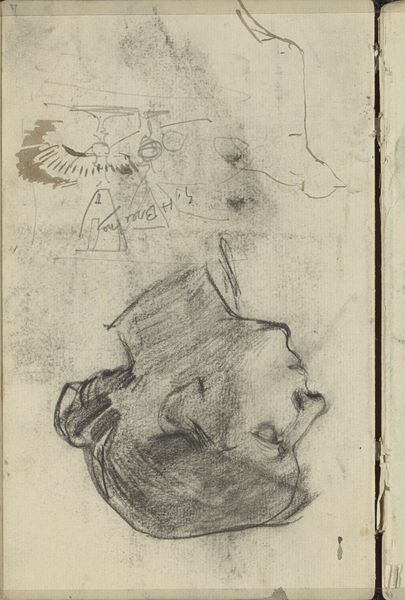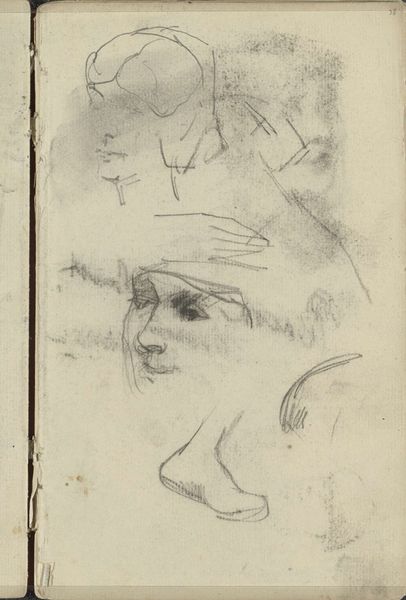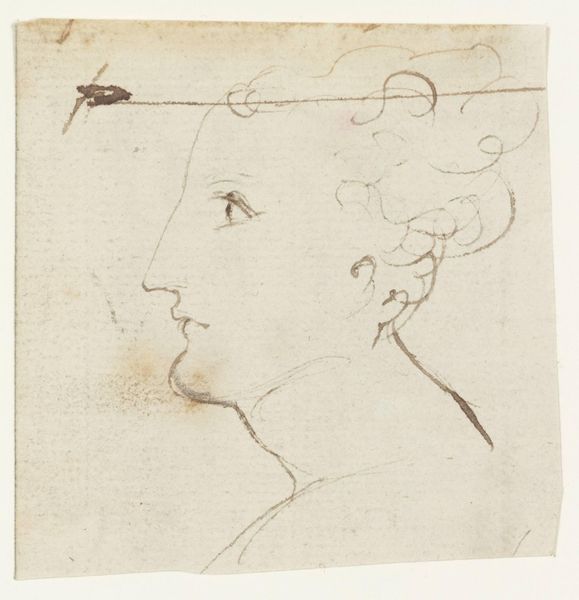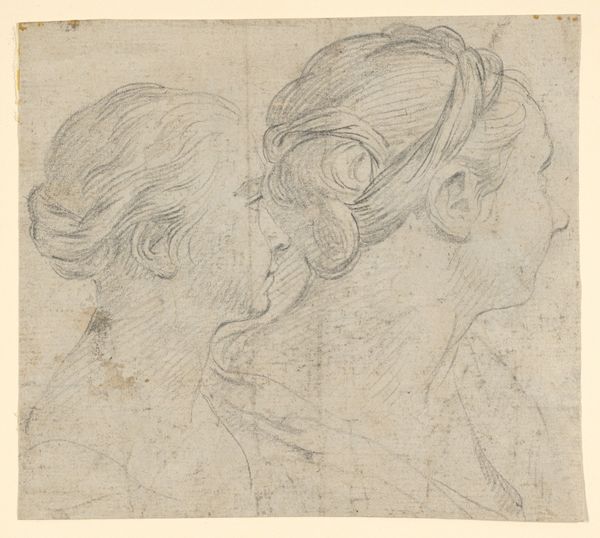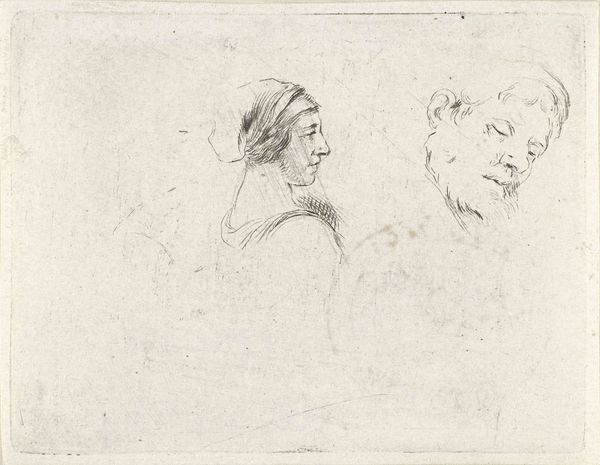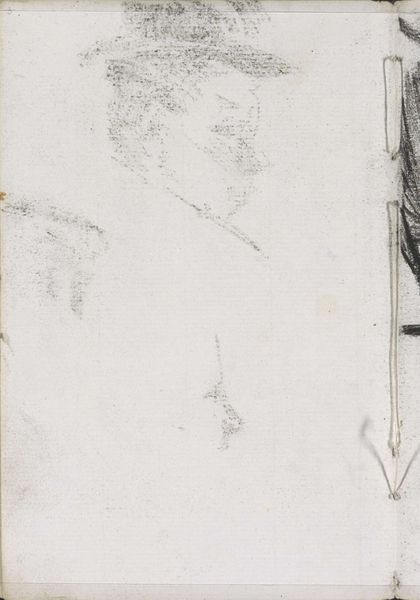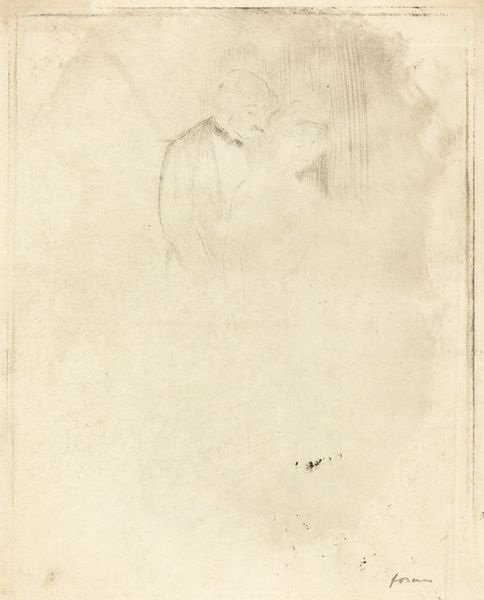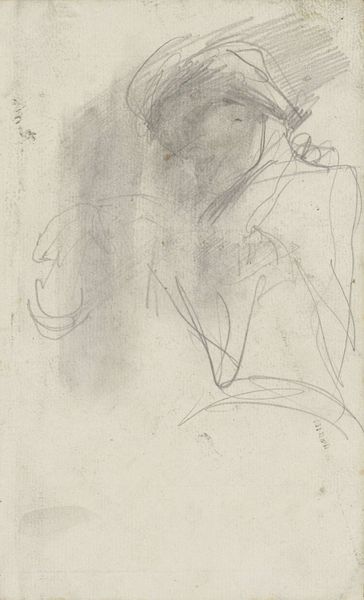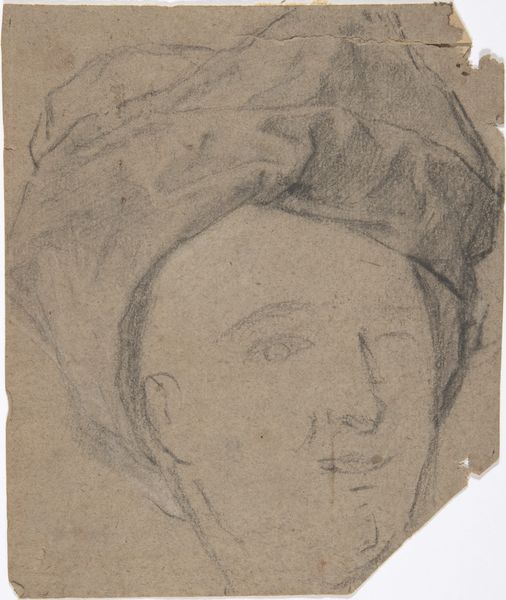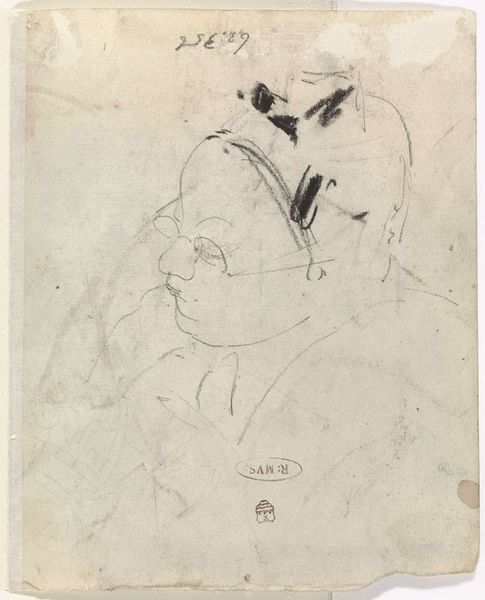
drawing, paper, pencil
#
portrait
#
drawing
#
amateur sketch
#
toned paper
#
light pencil work
#
dutch-golden-age
#
pencil sketch
#
incomplete sketchy
#
paper
#
personal sketchbook
#
ink drawing experimentation
#
pen-ink sketch
#
pencil
#
sketchbook drawing
#
genre-painting
#
sketchbook art
#
realism
Dimensions: height 140 mm, width 203 mm
Copyright: Rijks Museum: Open Domain
Curator: This is a quick sketch rendered in pencil by Dionys van Nijmegen titled "Twee vrouwenkopjes", which roughly translates to "Two Women's Heads." It was made sometime between 1715 and 1798. Editor: My first impression is one of intimacy and vulnerability. The unfinished quality gives it the feel of a private moment, observed but not fully revealed. It’s almost dreamlike, like catching glimpses of figures in fading memory. Curator: That's interesting. To me, the lack of strong definition emphasizes the socio-cultural constraints placed on women of the Dutch Golden Age. Their identities, much like this drawing, were often only partially formed in the public sphere. They were mostly rendered only at the level of sketching... suggestions. Editor: That's a strong interpretation, certainly fitting of the period! However, I'm not convinced it’s intentionally symbolic. The realism style is dominant, perhaps making it a genuine study, not to comment, but only to observe. The figures overlap almost as if this could be the record of practice, one layered onto another in haste to capture. Curator: I see your point. But even if unintended, these incomplete representations tell us something about how women's likenesses were perceived, documented, and circulated. Consider how male portraiture of the time exuded authority... The very casualness in this rendering of two women also speaks volumes. It carries significant historical weight just by being what it is. Editor: And from an iconographic perspective, do you find the doubling significant? Is there a visual dialogue between the two, however faint, or is it just artistic convenience, trying multiple angles at once? Curator: It is both practice and perhaps reflection. The doubling functions like memory itself – fragmented, layered, and perpetually in flux. These women represent multiple selves, caught in the act of becoming. Editor: A powerful observation. The sketch leaves us with so much room to meditate, a truly quiet rebellion through understated realism. Curator: Exactly. Perhaps in its perceived imperfection, it reflects their identities more genuinely, defying idealization, as so commonly seen in their period.
Comments
No comments
Be the first to comment and join the conversation on the ultimate creative platform.
